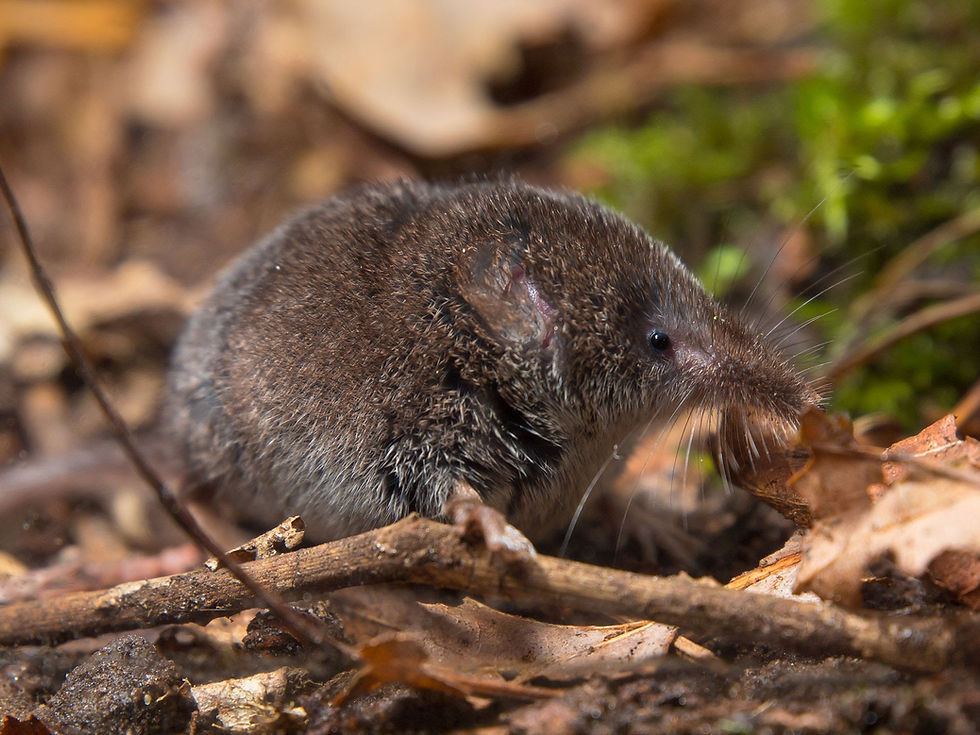One for the honey, two for the Pygmy Shrew
- Jean Miller, Master Beekeeper
- Feb 13, 2023
- 2 min read
I just have to share this interesting piece of knowledge I gained recently. The day after I gave my Kenyan Beekeeping talk to the Boston Area Beekeepers Association last week, one of their members called to thank me for the talk and sent me a photo (ed. note: It’s kind of gross) from another Boston beekeeper of a bunch of decapitated bees, found both outside the hive entrance and on the bottom board. She asked what I thought could have happened. Note: ½” mouse guards were on. I asked if this was a new discovery or older one and whether the honey was robbed out.
Initially, I was thinking perhaps European hornets could have attacked last late summer/early fall since they have the mandibles to decapitate honey bees. But the dead bees outside the entrance looked fresh, not like they had sat out for months. Also, it didn’t look like skunk damage, since skunks chew up bees and spit them out. I was told this was a recent discovery. One of the other Boston beekeepers looking into it mentioned possibly shrew damage. Well, that was a new pest to me... but upon investigation, it seems that was the cause.

The range of the American pygmy shrew is mostly Canada and New England, moving down along the Appalachians as far south as parts of Tennessee. The photo is from a colony near Boston which is not shaded as part of its range on the map... but not that far away. Likewise, it’s known to be in Pennsylvania, not that far from New Jersey, so I think we should be aware of its signs (decapitated honey bees found in the winter and irregularly shaped waste, compared to field mice). The Bee Informed Partnership shared more details in a 2014 article.
It appears the method of murder for a shrew is to pick off sluggish bees in winter from the cluster, decapitate them with their sharp teeth, then use their very pointy snouts to eat down through the opening in the thorax where the head was attached! Eww! And they have such high metabolism, they have to eat every 15 to 30 minutes. A clustered colony is easy picking for these varmints. The threat diminishes in the spring when the cluster breaks, the bees are more active and can defend themselves.
One apiary in Canada suffered a 70% loss (70 out of 100 colonies) one winter due to pygmy shrews. Pygmy shrews are small enough to get through 1 cm mesh (~0.4”). Our typical mouse guards are ½” mesh. So one solution is using 3/8” mesh. Not saying we should all switch over to that now since we might not have the little bugger yet in our vicinity, just that we should be aware. It might be coming our way.

Comments